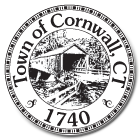A very short history of Cornwall
The town of Cornwall is in Litchfield County, Connecticut, one of the six New England states in the Northeastern U.S. Named after the county of Cornwall, England, the town was incorporated in 1740, nearly four decades before the United States declared its independence. The town encompasses three distinct townships: Cornwall Bridge and West Cornwall, each bordered by the Housatonic River to the west, and Cornwall Village, located three miles east of the river. Another significant natural feature is the vast amount of forested land, including hundreds of acres of Mohawk State Forest, resulting in Cornwall often called “the “Greenest Town in Connecticut”.
The proximity of its settlements to the Housatonic River offered an efficient means of transporting materials and goods that helped stimulate Cornwall’s early farming economy as well as assisted in the revolution of business and industry in the area. During the nineteenth century and the advent of the Industrial evolution, the town was able to maintain two furnaces, including a blast furnace, as well as to support charcoal-making industries. Cornwall earned a place in history as home to the Foreign Mission School dating to 1817, as well as the founding of the Cream Hill Agricultural School in 1845, whose property, still an active farmstead, was listed on the National Register of Historic Places in 1976. Cornwall has also long been renowned as the “Home of the Covered Bridge,” that has spanned the Housatonic River since 1864. Aside from allowing easy access to residents, the bridge is a popular tourist destination and among the most-photographed locations in the state.
Modern-day Cornwall continues to reflect its rural farming character while being home to arts, culture, artisans and entrepreneurs. Its convenience to major metropolitan areas makes it attractive for year-round and part-time residents as well as day-trippers. We invite you in to savor its many treasures.
Historical Society Connecticuthistory.org






